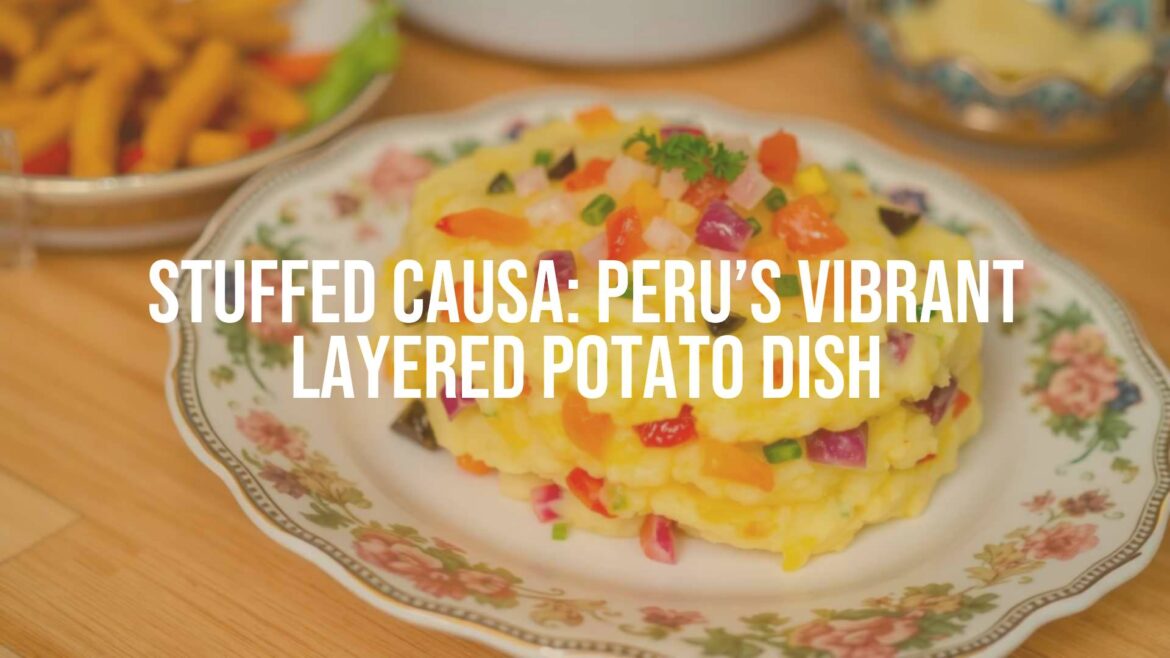The Unique Charm of Stuffed Causa in Peruvian Gastronomy
Understanding Stuffed Causa
Stuffed causa, known locally as “causa rellena,” is a cherished Peruvian dish that masterfully combines culinary tradition with colorful presentation. The word “causa” comes from the Quechua language, symbolizing sustenance and life, which is fitting for this served-cold layered creation featuring creamy mashed potatoes and a flavorful filling. Distinguished by its striking appearance and balanced flavors, causa is a staple in both home kitchens and fine dining restaurants across Peru.
Origins and Historical Context
The roots of causa date back to pre-Columbian times when native Peruvians cultivated dozens of varieties of potatoes in the Andean highlands. After Spanish colonization, ingredients like lemon and olive oil were incorporated, blending indigenous and European influences. Over time, causa evolved into the layered dish recognized today, especially beloved along Peru’s coast.
Cultural Significance and Occasions
Often regarded as a symbol of Peruvian unity and creativity, stuffed causa is served at family gatherings, festivals, and national holidays. Its easy transport and adaptability made it a meal carried by soldiers during the fight for independence, further endearing it to Peruvians as a dish of resilience and solidarity. Today, it epitomizes the vibrancy and hospitality of Peruvian culture.
Key Ingredients and Peruvian Flavors
The foundation of causa is smooth yellow potatoes, a uniquely Peruvian variety known for their buttery texture and brilliant color. These are combined with Peruvian lime juice, yellow chili pepper paste (ají amarillo), and a hint of oil to create the signature zesty and aromatic potato layer. The “stuffed” element typically involves fillings such as shredded chicken, tuna salad, seafood, or avocado, and is often mixed with mayonnaise, chopped vegetables, and herbs.
Visual Appeal and Serving Tradition
Causa rellena’s allure lies in its striking, multi-layered form. The dish is assembled in molds, creating alternating bands of golden potato and creamy filling, often topped with hard-boiled eggs, olives, and avocado slices. The presentation can be individual or as a shareable platter, making it adaptable for both casual and formal occasions. Served cold or at room temperature, causa is refreshing and ideal for Peru’s coastal climate.
Regional and Modern Variations
Though Lima is often considered the heart of causa, each region brings its own twist, reflecting local ingredients and tastes. Coastal areas favor seafood fillings like crab or shrimp, while other regions may feature Andean vegetables or even vegetarian versions. Contemporary chefs sometimes experiment with creative fillings, from quinoa salads to smoked trout, highlighting causa’s versatility and enduring popularity.
A Symbol of Peruvian Identity
Stuffed causa stands as a proud emblem of Peruvian gastronomy—a harmonious fusion of native roots, multicultural influences, and aesthetic appeal. Whether enjoyed at a casual lunch or featured at an elegant event, causa rellena invites everyone to experience the flavors, colors, and traditions that define Peru’s culinary heritage.


